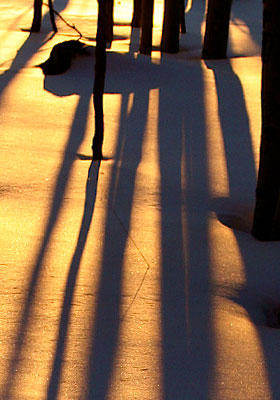Archive for the ‘new life’ Category
Tuesday, December 2nd, 2014

I had the privilege of traveling to the little kingdom of Bhutan recently, and one of the many gifts I received from that visit was the inspiration to spread the word about GNH. For Bhutan’s policy-making is guided not by the GNP (Gross National Product) but by GNH–Gross National Happiness.
It’s more than just a cute-sounding idea. There are documents outlining the four pillars, nine domains, and metrics for weighing and measuring progress. (http://www.grossnationalhappiness.com/) This little country of only 750,000 people is a model for a self-chosen set of values based on something we all chase: no, it’s not money; it’s happiness!
Thanks to our trip organizer, Narayan Shrestha (founder of the non-profit, Helping Hands), we were privileged to have a private dinner with the mayor of Thimpu, the national capital. Kinlay Dorjee seems humble, sincere, and clearly devoted to increasing the GNH in the capital and throughout the country. He spent some time introducing us to the four pillars, which are:
1. Good governance
2. Equitable and sustainable socio-economic development
3. Preservation and promotion of cultural heritage
4. Preservation and promotion of the environment
Pretty wonderful measures for policy-making, right? Let me backtrack to the inspiring back story.
In the 1970’s His Majesty the Fourth King Jigme Singye Wangchuck observed that economic growth had become the measure of growth and success across the world and at both collective and personal levels. Given the costs we are paying for this ideology, this enlightened king decided he would focus on a different set of values.
He came up with GNH, based on the belief that collective happiness of a society is the ultimate goal of governance. His legacy to his son, the current fifth King Jigme Kheser Namgyel Wangchuck, was the job of creating an operational framework for the growth of GNH in his country.
Finding that the four pillars were not complete enough, the Royal Government of Bhutan initiated the Good Government Plus (GG+) in 2005. Then the Centre for Bhutan Studies and GNH Research worked on indicators that now classify the values into nine domains. They are:
- Psychological wellbeing
- Health
- Education
- Time use
- Cultural diversity and resilience
- Community vitality
- Good governance
- Ecology
- Living standards
Can you imagine a day when your government might ask if these nine domains are being addressed before deciding on a policy? For example, what if deciding on a policy for immigration involved asking, “What policy will increase cultural diversity and resilience?”
Can you imagine a day when corporate boards and executives might ask themselves how happy they and their employees and customers are, using these nine domains? How are corporate policies affecting the health domain, for instance?
And can you imagine a day when you might ask yourself if the decisions you’re making in your own life are taking these nine domains into consideration? Is that decision you’re considering going to affect the ecology of the planet? Your relationship to ecology will actually affect your happiness.
Some evidence I saw that these measures are working in Bhutan: the clean, sparkling rivers, which were like something out of a dream. Plastic bags are illegal; stores give out fiber bags. Tobacco is illegal and you cannot bring it into the country. People wear traditional dress–the men wear elegant robes over dark or argyle socks and dark shoes. The women wear lovely long skirts topped by jackets with a shawl collar often in a contrasting color. There is only a small military presence. Buddhist temples and other historical and cultural sites are beautifully preserved, and prayer flags fly everywhere there is a holy site or particularly stunning view.
Of course the country still faces challenges. But I was struck by the spiritual underpinning or energy, if you will, that was palpable everywhere. I felt an air of kindness, an atmosphere of reflection, an attitude of appreciation. This doesn’t stem from isolation; even monks were talking on cell phones. But it felt as if people had it straight that technology was not the end point. What they’re after is working with nature and with our own gifts, promoting what every human longs for: happiness.
Tags: Bhutan, consciousness, creativity and empowerment, Gross National Happiness, inner peace, living today, managing change, The Beauty Way
Posted in caring for the earth, conscious evolution, consciousness, creativity and empowerment, happiness, loving ourselves, managing change, new life, nourishing ourselves, policy making, shifting how we see, shifting paradigms, The Beauty Path | 7 Comments »
Sunday, February 26th, 2012
“The soul-bird is waiting inside. Even if you have locked it in a cage, it is waiting to fly.”
from Flying Lesson #4

Lesson #4 contains a key moment, when you as a participant in the story, or the coaching or the retreat process, realize that there is indeed a soul-bird inside you who is longing to fly, and who was born to fly and knows how.
Next you realize that as a normal human, you have protected this soul-bird by building a cage around it, and have spent a lot of life strengthening and polishing the cage. At some point you may have forgotten that you actually ARE the soul-bird. You may have forgotten to the degree that you thought you were the cage.
But, no blame. This was just a mistake, not anything unchangeable. You’re right on time. It was just part of your development to concentrate on the cage. Now you are called to do and be something different.
Here’s the good news: Since you constructed the cage, you are the one who can open the door.
Now is the moment of choice.
Can you trust that little soul-bird to do what it came here to do? What adventure will it embark on when it spreads its wings?
This is what you’ve longed to do and be.
Open the door.
Tags: consciousness, Flying, Flying metaphor, Nature and the soul, perception, Photography, soul
Posted in aviation, Being, bringing out your gifts, coaching, conscious evolution, consciousness, creative imagination, creativity and empowerment, Flying, Guided imagery, loving ourselves, new life, nourishing ourselves, Photography, returning to essence, seeing oneself, self-healing, shifting how we see, shifting paradigms, Tools for seeing ourselves, Uncategorized | No Comments »
Tuesday, January 3rd, 2012
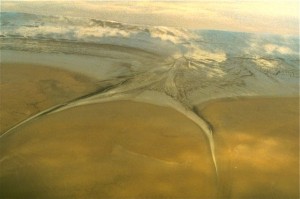
When I walk on the beautiful land in the Sutherland Valley, beneath the Catalina Mountains, the land reminds me that Mother Earth has a heartbeat, a rhythm. Being in nature attunes my body to her rhythm and reminds me of my own natural pace. So does meditation—it is a way of stopping to check in with the Source, and with my own body/mind, and re-calibrating.
I need to change my “attitude,”—an aviation term for the angle of the airplane– to pull the nose of my airplane up a bit and slow my speed.
When I think of the idea of slowing my pace, my “small mind” immediately panics at the thought. What will I miss? What will I not accomplish?
Fortunately my “larger mind” responds by asking, “Where are you going so fast? What is your destination or goal that is so crucial? Isn’t the journey the point?”
My small mind says nothing.
I remember Thich Nhat Hahn’s cautions about our pace, his advice about mindful walking and mindful eating and avoiding multi-tasking.
My small mind points out how many things I accomplish by multi-tasking. Is that really true? Recent research points out that our brains don’t operate at maximum efficiency when we do more than one thing at a time. Maybe we are sacrificing focus, intensity and depth of thought, excellence in problem-solving.
Perhaps I suffer from the aviator’s dreaded plague, “get-there-itis,” the disease that leads to unwise decisions like flying too late, or into bad weather, or when sick, or in conditions outside our expertise. If we crash, we might ask ourselves what was so important about that destination and how much time we really saved.
If I take time to gaze out the window, perhaps I’ll really see something like the scene in the photo of the water and cloud formations along the Sea of Cortez. What’s the hurry, really?
These are thoughts each of us must bring to consciousness as we pilot our way through a year that may challenge us to drop old patterns, to take responsibility for our own energy, to ask treasured family and friends to support us as responsible pilots who have taken the left seat. We may not be able to manage the strong winds of life, but we can manage ourselves.
What are your thoughts? Interact with us at Facebook.com/FlyingLessons!
Tags: Being, consciousness, Flying, Flying metaphor, inner peace, living today, managing change, meditation, musings, Nature and the soul, new life, own pace, Photography, spiritual practice, The Beauty Way
Posted in aviation, Being, coaching, conscious evolution, consciousness, Flying, happiness, healing, health, inner landscape, loving ourselves, managing change, meditation, mindfulness, new life, not doing, nourishing ourselves, Photography, returning to essence, seeing oneself, self-healing, shifting how we see, shifting paradigms, spiritual practices, The Beauty Path, Tools for seeing ourselves | No Comments »
Tuesday, December 13th, 2011
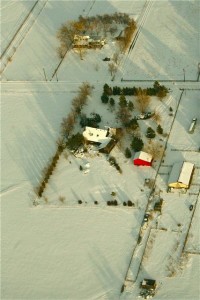
Just because you are reading this, I think you deserve congratulations for taking the time to read something just for you! No matter what your holiday traditions, this is a busy time!
Which is why I ended up reading my own Flying Lesson #2 over again. It’s Bring Enough Fuel for the Journey. Here are some excerpts and thoughts that struck me all over again as good advice for the season:
It’s food for thought that even though there’s no excuse for running out of fuel in the aviation world, we consider running on empty a normal part of our culture. In some circles there’s even a sort of nobility attached to being such a hard worker that everyone knows you never sleep. Even when people refer to someone as being a workaholic, rarely do they shake their heads in sadness or suggest a good treatment center. In many cases, overworking and overdoing is considered the means to success.
But when we have the ambition to fly, to rise above the gravity of our current situation, self-care becomes a crucial function. If we are going to push the envelope and move into a lofty territory where humans have only dreamed of operating we’ll have to pay attention to everything we’re doing and be conscious.
Being conscious is what piloting our lives is all about. And the proof of the pudding (especially the Christmas pudding) is how well we manage our own energy.
Have you ever stopped in the midst of rushing around to listen to a small voice saying something like, “What AM I DOING?”
This is the same voice who might ask other wise questions, like:
- How about a 15-20 minute power nap?
- What if I just took a hot bath instead of…
- Is the food I’m about to eat truly my premium fuel?
- What if I went to bed at 9 tonight?
- Do I really want to go to that party?
- Is this conversation nourishing me?
Never running out of fuel is about taking 100% responsibility for not burning out, not depleting yourself, and for knowing and cultivating the kinds of premium fuel that truly give you energy. Who else will do this for you?
Hmmm, maybe Santa. On the other hand, why not put this present right in the center of your being this minute:
Peace.
Joy.
Freedom to manage your own energy.
May you find the generous heart within that wants to give you these gifts this season.
In love and light,
Pam
Tags: consciousness, Flying, Flying metaphor, holidays, inner landscape, inner peace, living today, managing change, managing energy, managing stress, musings, new life, perception, Photography, spiritual practice, The Beauty Way, winter
Posted in aviation, conscious evolution, consciousness, creativity and empowerment, Flying, health, inner landscape, loving ourselves, new life, nourishing ourselves, Photography, seeing oneself, self-healing, shifting how we see, shifting paradigms, spiritual practices, Tools for seeing ourselves | No Comments »
Wednesday, June 16th, 2010
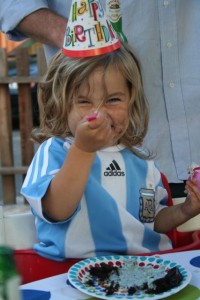 Maggie just had her “happy” and she is two. What did she have to say about that? “My happy June.” Yes, her birthday was in June. And on the day, she just kept saying, “My happy.”
Maggie just had her “happy” and she is two. What did she have to say about that? “My happy June.” Yes, her birthday was in June. And on the day, she just kept saying, “My happy.”
It is her happy. She has every right to have “happy.” None of us would want to deny a two-year old as adorable as my grand daughter her “happy.”
And as for the rest of us? Do we know as certainly as Maggie that it is natural and right for us to have our own “happy?” If so, why does it seem hard to hang on to sometimes? Why are we so affected by outer events that we forget about that birthright? Why do we just hand over the power we have to claim “happy” for ourselves?
This is a simple wish for you to find your “happy” right now, independent of any challenges or sadnesses happening in your life. It is still your “happy” and it doesn’t even have to be your birthday, or June.
This is your moment.
Tags: birthright, challenges, consciousness, happiness, inner peace, musings, perception, Photography, ups and downs
Posted in children as teachers, conscious evolution, consciousness, happiness, loving ourselves, new life | No Comments »
Monday, June 7th, 2010
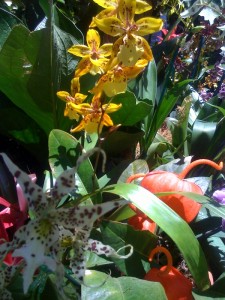
outrageous beauty
I’ve been inspired to write about the qualities of feminine leadership after seeing a wonderful exhibit in San Diego at the Mengei International Museum. It’s entitled Sonabai: A New Way of Seeing. Sonabai was a poor woman who lived in a remote village in central India and was married to a man who kept her imprisoned in their house for ten years. Unable to have contact with anyone but their small son, and able to only go out to their well, Sonabai went beyond surviving to thriving. She began to create.
When she discovered that she could sculpt the thick mud she scraped off the sides of their well, Sonabi began to make figures and animals to serve as toys. Next, it occurred to her to fashion a screen that would filter the hot sun beating down on one side of the house. She tied pieces of bamboo into small circles and connected them. She attached her screen to the house with wood, and covered the whole thing with mud. Next, she sculpted whimsical birds and figures to sit within the openings of the screen. She painted all her work with bright colors made of vegetal dyes. By the end of her decade, her whole house had become a work of art.
Sonabai created something completely unique without any training or any exposure to architecture or art. She had never seen or known about the elaborate screens that are part of the royal architecture in India’s cities. Yet out of the deep well of creative energy to which we all have access, she created outrageous beauty. Other women nearby had decorated their doorways, but in patterns and colors that stayed within the local traditions. Sonabai’s art was fresh, innocent, alive and original. Like the plants in the photo above, the details she chose, the colors and the variety of designs were delicious.
Sonabai wasn’t aware that she was going to become a leader, but she did. When she was discovered and her art was exhibited internationally, she received a grant to teach other Indian artists her methods. They have taken the basic folk art themes and developed their own styles and variations. Sonabai has left a legacy–not only of art, but a lesson about creativity and empowerment.
Perhaps the way we can all engage the creative power that lives within us, is to begin by thinking of what kinds of beauty we love. How can we create more experiences of these kinds of beauty? Some of us might not ever sculpt or paint, but we might create beauty with food or flowers or music or dance. We might recite poetry with passion or learn the forms of a sport in a way that feels beautiful to us. All these efforts are ways in which we can empower ourselves. We can do more than survive; we can thrive.
If you’re curious about Sonabai and the gorgeous exhibit created by anthropologist, photographer and curator, Stephen Huyler, go to http://www.sonabai.com/exhibition.html.
And then, I’d love to hear your comments about how you create beauty and how you feel that is related to the new feminine leadership!
Tags: beauty, Creating beauty, creativity and empowerment, living today, new life, perception, Photography, The Beauty Way, women leaders
Posted in authenticity, bringing out your gifts, consciousness, creative imagination, creativity and empowerment, divine feminine, feminine leadership, healing, Imagination, new life, Photography, self-healing, shifting how we see, The Beauty Path, women's empowerment | No Comments »
Monday, May 10th, 2010

Today there is a new wave of opportunity for women who want to become empowered, conscious, evolutionary leaders who make a difference. Teleclasses abound. Just google Integral Enlightment or Feminine Power or Conscious Evolutionaries and you’ll see. In the meantime, here are 3 principles to think about and practice:
1. Nourish yourself. This means on the level of mind, body and spirit. These are not times for wimps. We need to be strong. Gentle warriors, standing in our truth. If we don’t take care of ourselves, what good will we be for anyone else? So what is your premium fuel? Fill that tank.
2. Ride the wave. The wave in the photo is a wave of light, a photo projected on the wall of an imaginative San Diego restaurant. Light is nothing but energy. You are nothing but energy and light. So ride the big wave of light, the one other “en-lightened” beings ride. Jump on. Meditate, pray, do yoga, eat spinach or do whatever else helps you stay on. Ride the wave of light.
3. Bring out your soul’s gifts. If you don’t bring them out, what in the world are they for anyway? They are your “original medicine” and if you don’t bring them out, they could disappear forever. This is the moment. We are the ones. We need whatever you can offer. Remember what Jesus said (according to the Gnostic gospels): “If you bring out what is within you, what is within you will save you; if you do not bring out what is within you, what is within you will destroy you.” Sounds dramatic, but think about illness, crime and other tragedies. Could be as simple as this. Out. Into the world. Now.
The Dalai Lama said it best recently: “The western woman will save the world.” I guess it’s up to us. Let’s get started!
Tags: centering techniques, consciousness, empowerment, feminine leadership, meditation, new life, perception, Photography, spiritual practice, women leaders
Posted in authenticity, bringing out your gifts, conscious evolution, consciousness, divine feminine, feminine leadership, loving ourselves, meditation, new life, nourishing ourselves, self image, self-healing, spiritual practices, women's empowerment | No Comments »
Friday, April 30th, 2010
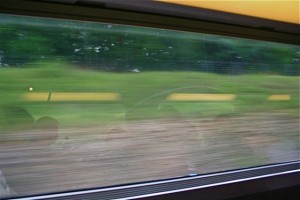 Among the many prophesies about these challenging times we are inhabiting, the Hopi have commented on how things will continue to speed up. And their advice? “When things speed up, slow down.”
Among the many prophesies about these challenging times we are inhabiting, the Hopi have commented on how things will continue to speed up. And their advice? “When things speed up, slow down.”
Isn’t it true that when we do slow down, the days seem longer? When we were children, time went so slowly. As we grow older and accelerate our “progress,” time speeds up. Proof that time is relative.
And isn’t it true that right now everything seems accelerated? For me it seems harder to stay in touch with everyone on a deep level, in spite of all the social media. Lives are getting more challenging and complex. Things are speeding up.
All the mindful meditation practices encourage us to notice all the elements of this very moment. That is slowing down to the now. And when I do that, I can actually see where I am. See better what drives me, what delights me. See more clearly what action I’d like to take next. See more wholly how I can serve.
What do you think about time? Is it running you? Are you “running” out of time? Or are you pausing, stepping out of time? Slowing down long enough to see and be?
Tags: centering techniques, consciousness, inner peace, living today, meditation, perception, Photography, spiritual practice, The Beauty Way, transformation
Posted in Being, centering techniques, consciousness, meditation, new life, not doing, nourishing ourselves, Photography, returning to essence, seeing oneself, shifting how we see, shifting paradigms, spiritual practices, The Beauty Path | No Comments »
Wednesday, March 31st, 2010
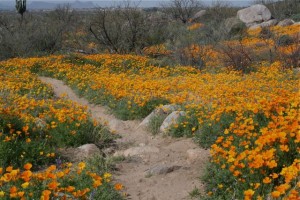
the poppy trail
What is spring if it isn’t about new life? And why not new life with wild abandon, with an abundance that makes you laugh out loud? This time Spring has really done it in Tucson.
I couldn’t walk this path through Catalina State Park without wanting to sing, to howl, to do cartwheels! We aren’t in Kansas any more. And how many times do we get experiences that are simply amazing, pure surprise and joy?
We are beings evolving as surely as this desert meadow. And so we contain the same life force that produced that riot of poppies, so close to each other that they are touching. We have the blooms within us.
And what is it that contributes to our blooming? Certainly timing and the right conditions. But unlike the poppies, we aren’t completely dependent on rain and sun. We can nourish ourselves. We are conscious. We can choose to align with the life force that pushes up through our bodies, erupting in a blaze of color and beauty.
What do you do to nourish the blooming within you? How do you give yourself the moisture, the flow of nourishment you need? How do you summon the sun, the light you need for life to be sustained?
Just as I felt high just from poppies without opium, you can have ecstatic experiences every day just by venturing into nature–outside and within your own being.
Bloom on.
Tags: beauty, blooming, consciousness, inner landscape, new life, perception, Photography, Self, spring, The Beauty Way
Posted in conscious evolution, consciousness, inner landscape, loving ourselves, nature as mirror, new life, nourishing ourselves, Photography, seeing oneself, self-healing, spring, The Beauty Path, weather | No Comments »
Saturday, March 20th, 2010
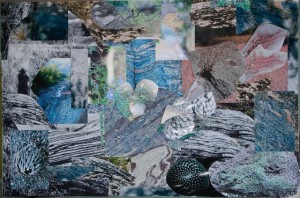 Ever heard of photographic vision boards? I hadn’t either, so I invented them. Now others may have invented them as well–I don’t know. But I held an experimental vision board class, and here is one of the results: mine!
Ever heard of photographic vision boards? I hadn’t either, so I invented them. Now others may have invented them as well–I don’t know. But I held an experimental vision board class, and here is one of the results: mine!
We went out into the desert together, where we found a lot of water after all the recent rains. We took photos of the things nature does best. Thinks like flowing, regenerating, combining life and death, blooming, bending, growing, holding, creating texture and color, and many other things. Then we met again with our prints and created vision boards about the experiences and feeling states we wish to cultivate in our lives. To see more photos and a longer explanation of our process, go to: http://web.me.com/pamelahale/Through_A_Different_LensGalleries/Photo_Vison_Board_class.html
What do you see in this vision board? Of course it’s different viewing the 20″ x 30″ piece up close, but you can probably see a lot of flow. A lot of presence of the element of water. A lot of texture and shadow. Do you see me seeking beauty in nature? Do you see the heart I unconsciously created in the center? What else to you see?
Now when you go outside wherever you live, you might think about what nature is showing you about yourself, your own longings for what you’d like to manifest, and about your own human potential.
Vision on, and share your observations!
Tags: Essence, inner landscape, inner peace, living today, managing change, musings, new life, perception, photographic vision boards, Photography, The Beauty Way
Posted in conscious evolution, Imagination, inner landscape, managing change, nature as mirror, new life, photographic vision boards, Photography, seeing oneself, shifting paradigms, The Beauty Path | No Comments »










